39 Years of Holden Commodores
Today the last Australian Holden Commodore, the last Australian car, was built. The Commodore started out as an Australianised Opel Rekord and from next year will be an imported and rebadged Opel Insignia. The Commodore has gone full circle.
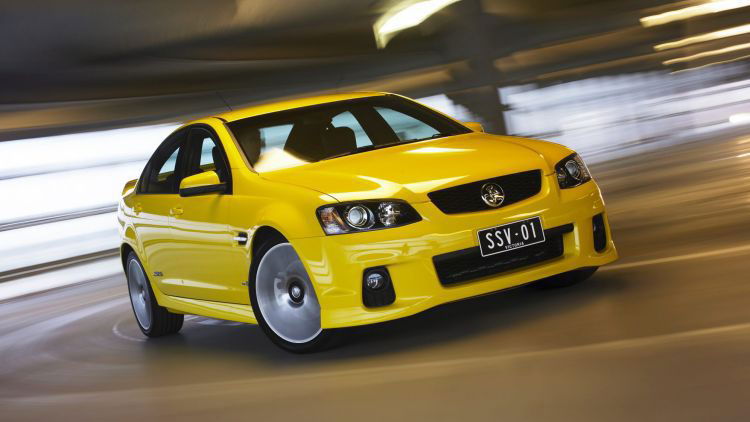
Today the last Australian Holden Commodore, the last Australian car, was built. The Commodore started out as an Australianised Opel Rekord and from next year will be an imported and rebadged Opel Insignia. The Commodore has gone full circle.
The Holden Commodore was born out of the 1970s oil crisis. For the first time, the Australian government introduced mandatory emissions standards, and petrol had become considerably more expensive. Buyers were turning away from large cars. Holden’s solution was to replace both the large Kingswood and medium Torana with a single model in between the two. The Opel Rekord was chosen as a base for the new family Holden. To accommodate Holden’s larger engines, they took the front panels from the Opel Senator. The Commodore name was borrowed from another Opel. To prevent a repeat of the mistake Ford made with the fragile XK Falcon, the suspension was heavily redesigned for Australian conditions. At the VB’s 1978 release (why it wasn’t called VA is a mystery) it gave Holden a leg up on the competition. Ford, having invested heavily on a redesigned engine for the facelifted XC Falcon couldn’t afford to do the same. Mitsubishi couldn’t afford a replacement at all for the ageing and slow-selling Valiant.
The Commodore was a big step forward for Australian family cars, particularly in handling. Pre-launch focus group revealed that opinions on the styling were divided between city and country audiences. Those in the city liked it, but it found little favour in the bush. The problem was the raked front end. That was rectified by a thicker chrome bar above the grille. It won the 1978 Wheels Car of the Year, and took over where the HZ left off as the top selling car in Australia.
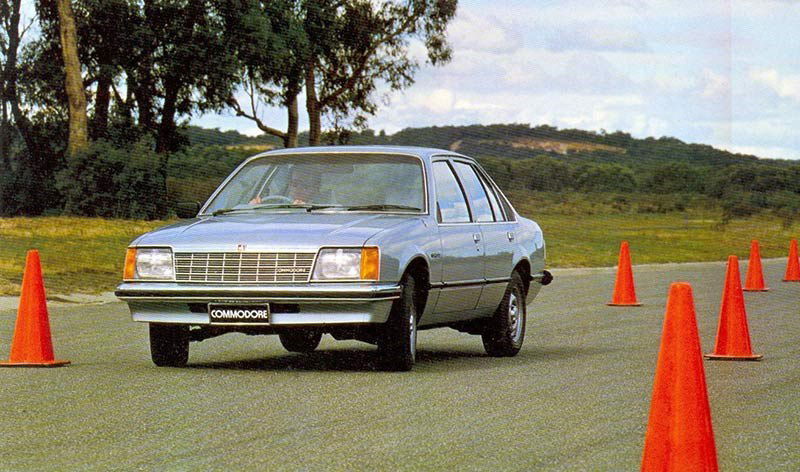
Carry over engines meant that fuel economy wasn’t as greatly improved over the HZ as Holden and buyers had hoped. Holden’s then managing director Chuck Chapman as a response to the 1979 energy crisis. Instead of using Opel’s four cylinder, Holden used their own Starfire four, an engine designed by dropping two cylinders from their six. Introduced in the 1978 UC Sunbird, the Starfire wasn’t up to the task of moving the Commodore. Performance was woeful and fuel economy worse than the six. The Starfire also had a reputation for unreliability, earning the nickname Misfire. The VC Commodore was only bought by company fleets. Employees given them as company cars abused them to kill them faster. It’s likely that no Commodore fours survive. The VC four cylinder hurt Commodore sales. Fleets moved in droves to Falcons, and the Commodores small car reputation was galvanised. With the energy crisis over and buyers wanting large cars again, this was a big problem.
With the Torana gone, the Commodore took over Holden’s motorsport efforts. After Ford pulled out of racing, Holden didn’t see the point of continuing as the only factory team and withdrew support for Peter Brock’s Holden Dealer Team. With support from the dealer network, HDT was able to continue. Holden was no longer interested in touring cars, so it was up to HDT to build their own homologation specials. The VC HDT Commodore SS Group C was Brock’s first road car.
In 1984, Holden announced that they would follow Ford in dropping the V8 engine with the introduction of the VK. This was motivated by the upcoming introduction of unleaded petrol and the cost of adapting the V8 to run on it. In response, Street Machine editor Geoff Paradise started the V8s ‘til ‘98 campaign.The decision was ultimately reversed and a unleaded version of the 304ci V8 was developed for the VK.
1986’s VK introduced a six window design intended to make the Commodore appear larger, as buyers once again wanted large cars. The VK was also the basis for the most iconic Brock Commodore, the Group A SS “Blue Meanie”. The V8 engine was de-stroked to bring the capacity below 5000cc and put the Commodore in a lower weight class.
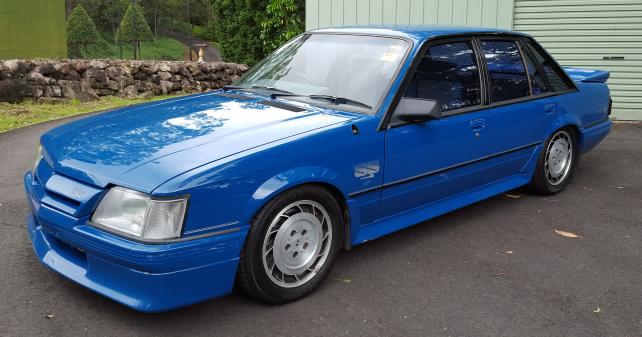
Successive “improvements” throughout the 1980s changed the Commodore’s character for the worse. Dynamically it was no longer ahead of the the Falcon and Holden’s engine development had fallen behind Ford’s. The XF Falcon, despite being a size larger, was more fuel efficient, faster and had better handling balance. The VL saw the old Holden Black Motor six cylinder replaced by the Nissan RB30 in response to tightening emissions regulations. It delivered much-improved performance and economy, but the understeer remained.
Brock’s Energy Polariser made its controversial debut in the VL. The small plastic box of crystals was designed by Brock and his chiropractor Eric Dowker. It was supposed to realign the molecules around the car to optimise its performance. It didn’t, of course. Holden dealers were forced to confront angry HDT owners arguing that their molecules weren’t being aligned, that their polarisers weren’t working. Brock was adamant that the Polariser worked. Holden disagreed and sacked him, contacting Tom Walkinshaw to establish a replacement for HDT racing team and road car business.
The VL is best known for two models. The first was the Calais Turbo, whose RB30DET engine threatened to make the V8 redundant and nearly saw the V8 killed off. The other was the HSV Commodore SS Group A SV Walkinshaw. The Plastic Pig, or the Batmobile, as it was known, for its wild aerodynamic appendages was the first HSV. The HSV VL was the last homologation special built in Australia. They’ weren’t required after the switch from Group A to Group 3A 5.0L touring cars.
The VL made way for the larger VN in 1988. Just as the VB was derived from the Opel Rekord and Senator, the VN was based on the new Opel Omega. This time, however, the changes were more significant. Buyers wanted large sedans again and the Falcon had overtaken the Commodore in the sales race. In response, Holden made the VN larger. Exterior design suffered as a result. Budgetary restrictions prevented Holden from giving the Commodore a wider track. The VN was first Commodore Mike Simcoe worked on, and he wasn’t happy with the finished product. “VN was the ugliest car we ever did,” Simcoe said in 2015. “We compromised everything to make that car. The only consideration was the package and price. It was over bodied because of the manic desire to create a big car… I can say that because I was involved.”
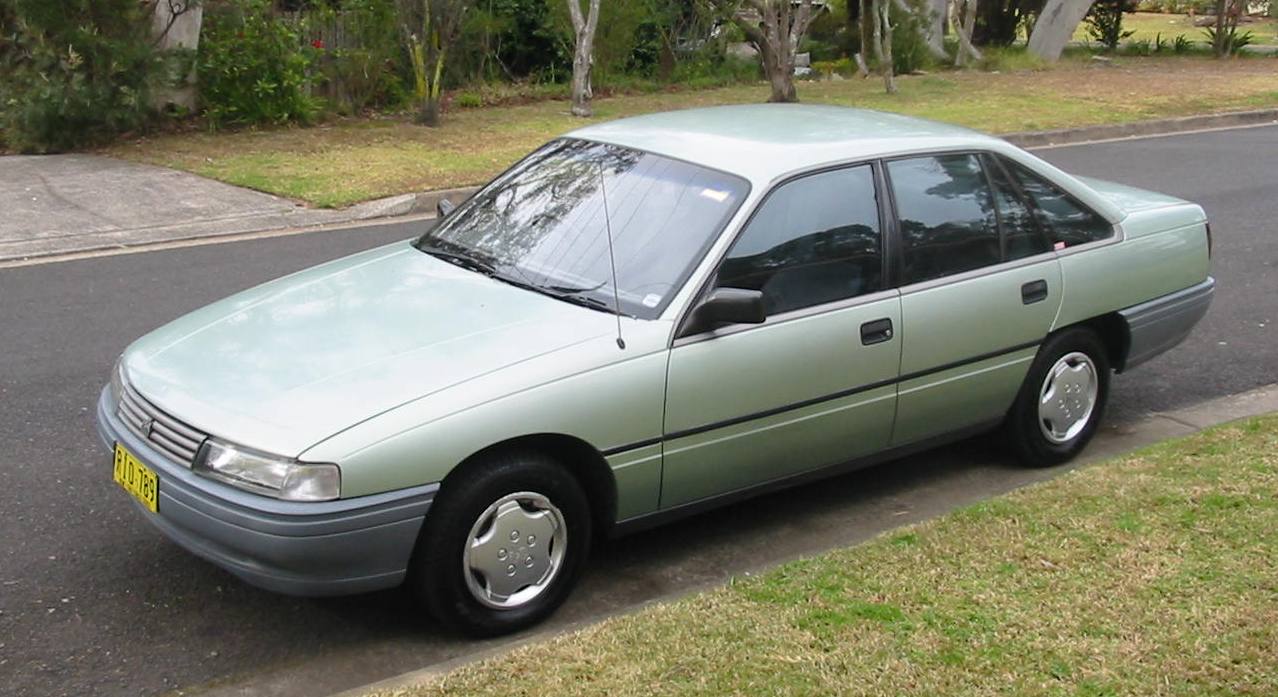
Another major change was the replacement of the excellent Nissan RB30 with the not so excellent Buick Ecotec V6. The decision was a purely economic one. The RB30 was a victim of the late 1980s Super Yen. At the time, one Australian dollar bought 110 yen, so the Nissan was twice as expensive as the Buick. Regular Holden versions of the V8 also finally received fuel injection. EFI was introduced by HSV in the VL, but Holden versions made do with carburettors.
Despite the styling and switch to a Buick V6, the VN was named Car of the Year in 1988, narrowly beating the EA Falcon. It also brought buyers back to the Commodore.
Throughout the 1990s, the Commodore progressively became more sophisticated, becoming the first Australian car to have dual airbags across the range with the 1993 VR. Semi trailing arm independent rear suspension, introduced in 1990’s long wheelbase Statesman, trickled down the range. It became standard in the Calais and SS and optional elsewhere with the VR.
The second generation Commodore was also sold as a Toyota. In response to the Button Rationalisation Plan, Holden and Toyota entered into a joint venture known as United Australian Auto Industries. Under UAAI, Holden received the Corolla and Camry as the Nova and Apollo, respectively, and Toyota got their own version of the Commodore, known as the Lexcen. The Lexcen was simply a slightly de-specced Commodore V6 available as a sedan or wagon. V8 and ute versions weren’t offered. Lexcen sales were dismal, limited mostly to fleets.
1997’s all new VT was a massive leap forward for the Commodore. After turning things around with the previous generation, Holden was allowed to spend more on the Commodore this time around. Once again it was based on the Opel V platform, but there were significant changes. The wheelbase was 60mm longer and the sill panels spliced and widened for an extra 36mm. The VT didn’t share a single panel with the Opel Omega, and despite being larger, lacked the VN’s awkward proportions. The drawback to this increase in size was a 166kg weight penalty that left the VT thirstier and slightly slower than the VS.
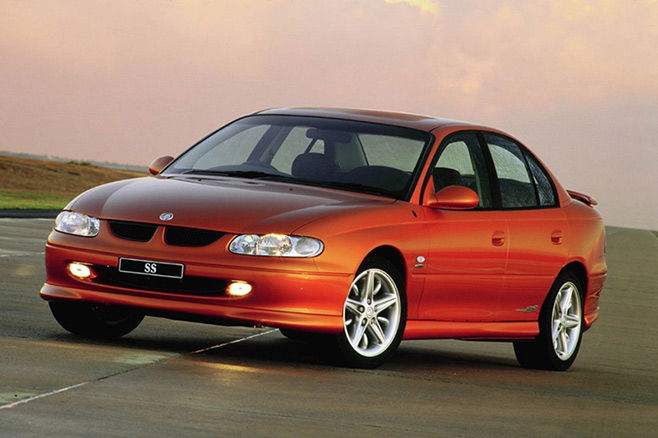
The VT was the first Australian car available with traction control, and their first Commodore with IRS standard across the range, including the wagon. The Opel-derived semi trailing arm setup helped make the Commodore the large car dynamic benchmark again. The venerable Holden V8 was updated and carried over for the first two years domestic sales, before being replaced by a Chevrolet LS1.
WIth some help from the offputting AU Falcon, the VT/VX Commodore became the highest selling Commodore ever.
Buick showed some interest in the VT, and sent a team of engineers to Australia to evaluate the VT for US exports. The only thing that came out of it was the 1995 Buick XP2000 concept. The fuel tank mounted behind the rear axle killed any US export plans.The Buick version of the VT became the new Calais instead. That didn’t stop the VT from being the first Holden to be exported further than New Zealand in significant numbers since the 1970s. Left hand drive models were sent to the Middle East, Brazil and Argentina as the Chevrolet Lumina. Right hand drive Luminas, including utes, were sold in South Africa.
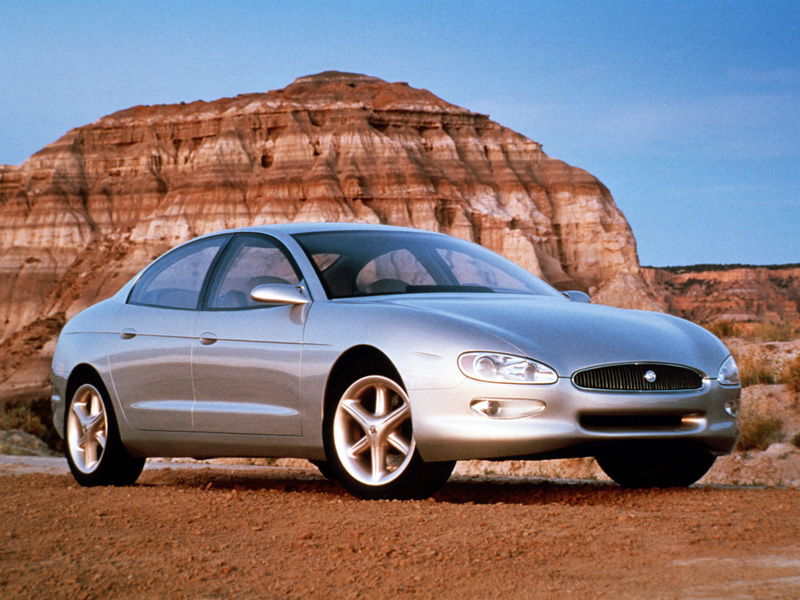
In 1999, Holden displayed the Commodore Coupe concept at the Sydney Motor Show. It had been designed by Simcoe at home on his lounge room wall. A business case built on exports was put together and the Monaro was reborn. The new Monaro was initially offered as a supercharged V6 CV6 and V8 CV8. The CV6’s lifespan was short. A lack of sales saw it dropped from the Monaro range in 2003. A HSV GTO and joined Holden’s in-house offerings in 2001. HSV followed this up with the GTS and AWD Coupe4 in 2004.
The VX was heavily facelifted to produce the VY in late 2002. The VY brought completely new front and rear panels, and a new interior, but was mechanically it was mostly unchanged. While it was enough to keep the Commodore sales in front, it lost market share to the new BA Falcon and marked the beginning of a decade long sales decline. The VY was facelifted to become the VZ in 2004, with a new Australian-developed V6 engine. The Alloytec V6 replaced the old and much-maligned Buick Ecotec. The high feature version used in the SV6 and Calais gave Holden NA six-cylinder power bragging rights over the Falcon for the first time in the Commodore’s life. In 2006, a VZ HSV Maloo driven by Mark Skaife set a Guinness World Record for the world’s fastest production commecial vehicle.
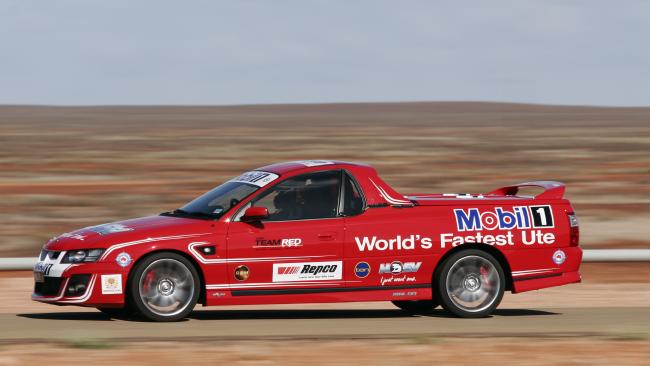
Plans to export the Commodore to the US were reignited following a visit to Australia from Bob Lutz. Lutz drove a VY Commodore SS and wanted it in America as a Pontiac. Company politics got in the way., Pontiac refused to import the Commodore, and instead suggested building a RWD Bonneville at much greater expense. Lutz eventually got his way, and the Monaro became the Pontiac GTO. The Monaro also became a Vauxhall in the UK and a Chevrolet Lumina SS Coupe in the Middle East.
Not long after the release of the VT, Opel decided to abandon the Omega and the V platform. This left Holden searching for a replacement. The only other RWD platform GM had to offer was Cadillac’s Sigma platform. In 1999, Holden seriously investigated this option. Holden eventually ruled Sigma out as it was too expensive, and too small, particularly in the boot and across the rear seat. Sigma was also too expensive. As former Holden MD and Cadillac senior engineer Denny Mooney recalled in 2006; “The reality, as it turns out, is that we were designing Cadillacs, and Holden, you know, isn’t designing Cadillacs. Holden couldn’t afford a lot of the stuff that we could put into Sigma”.
Holden explored a variety of alternatives before rejecting Sigma. Reskinning VT, reskinning VT with new suspension, an all-new platform loosely derived from Sigma were all options. Some within GM doubted Holden’s ability to develop an all-new platform from scratch but that turned out to be the only option. Between the VT’s aging suspension and Sigma being too expensive, it was the only viable option. The Zeta platform, as it became known in 2004, cost Holden $1 billion, making it the most expensive new model development program ever undertaken in Australia.
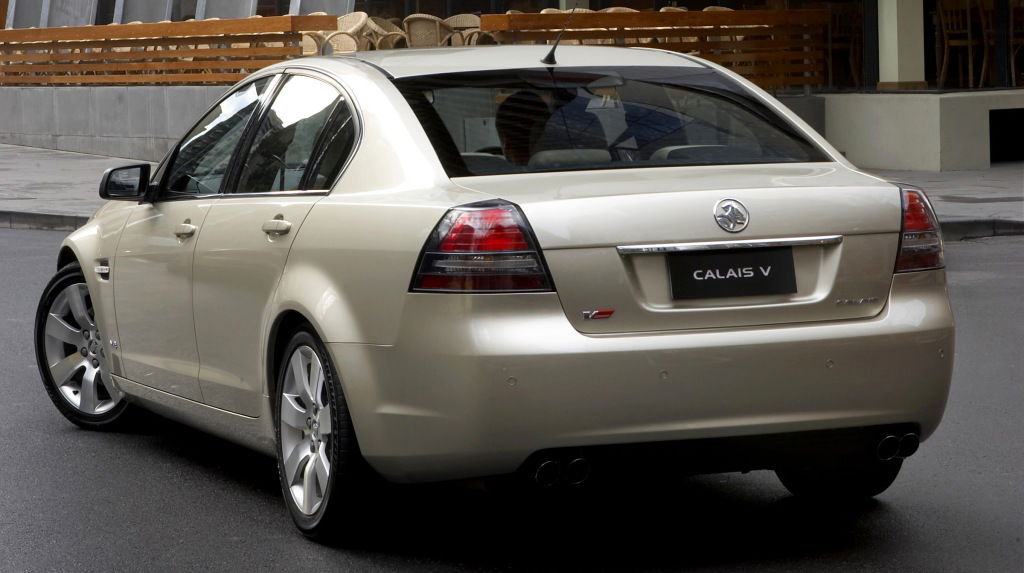
The Zeta platform was intended to replace the GM W platform and underpin a wide range of models, even a SAAB. The Global Financial Crisis and rising oil prices killed off every Zeta-based car except the Chevrolet Camaro. This was probably the point where the Commodore’s death was confirmed. Holden was eager to produce a Zeta-based SUV similar to the Australian Ford Territory, but GM wouldn’t allow it. They promised to develop one in the US that could be built in Australia, but never did. Such a vehicle would have sold the production volume shortage the Elizabeth plant was facing.
The VE, like its predecessors, was launched to critical and sales success. In its first year it was the highest selling car in Australia and won Wheels Car of The Year. It was the third COTY win from three generations. What the VE couldn’t do was stop the slow decline in sales that began in 2003. Commodore sales fell through every year of VE production from 2006 to 2013.
The Monaro didn’t survive into the VE. The Commodore took its place in the US as the Pontiac G8, replacing both the GTO and the Grand Prix. GM didn’t make much of an effort to market the G8 in America, so it never really achieved its potential. In almost two years, only 38,000 were sold before the Pontiac brand was killed off before ute and wagon versions could be introduced. For comparison, 150,000 Dodge Chargers were sold over the same period.
Work on the VF began in 2009. The key objective was to improve fuel economy is response to new emissions standards and rising fuel prices. Improved aerodynamics, reduced weight and joined direct injection and E85 compatible V6 engines introduced in the 2009 VEII. While well received, the VF was the only new Commodore not to be named Car of the Year It was controversially deemed eligible in 2013, and finished runner-up to the Volkswagen Golf Mk7. The VF was able to deliver an increase in sales in 2014 but started declining again in 2015.
US Commodore exports recommenced with the VF in 2013 as the Chevrolet SS. This happened mostly because of a contract GM had with the Australian government that required them to export a certain number of cars to America. The SS only came in one specification, which was broadly equivalent to the Commodore SS-V. The SS has the distinction of being the first imported car to compete in NASCAR in over 50 years.
Sadly, CAFE emissions standards restricted the number of SSes Chevrolet could actually sell in America. Even more than the G8, it remains a relative obscurity.
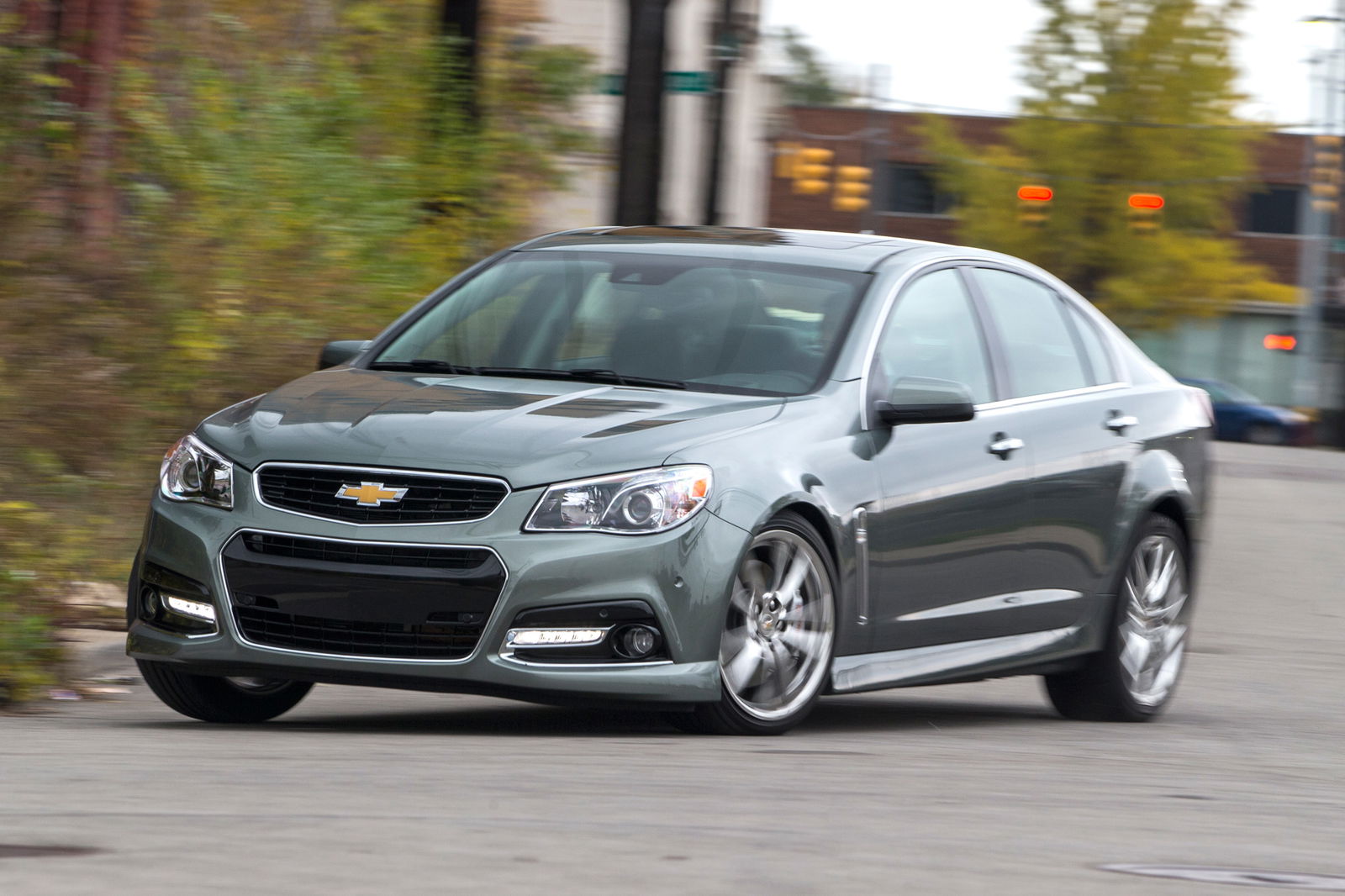
Following a public feud with then-treasurer Joe Hockey, who dared Holden to close, Holden announced on 11th December 2013 that their Australian manufacturing operations would cease in 2017. Declining large car sales and the upcoming loss of Ford’s Australian production volumes to keep supplier costs down made it to difficult to continue without increased government support. The government wasn’t even willing to maintain the current level of support.
The final Commodore, 2015’s VFII, came after Holden’s factory closure had been announced. For the VFII SS-V Redline Holden delivered one of the best Commodores ever. The 304kW LS3 V8, Brembo brakes, and revised FE3 suspension tune further encroached on HSV’s territory. HSV followed by offering the Clubsport, Maloo, and Senator with the supercharged LSA, and then the LS9-powered GTSR W1.
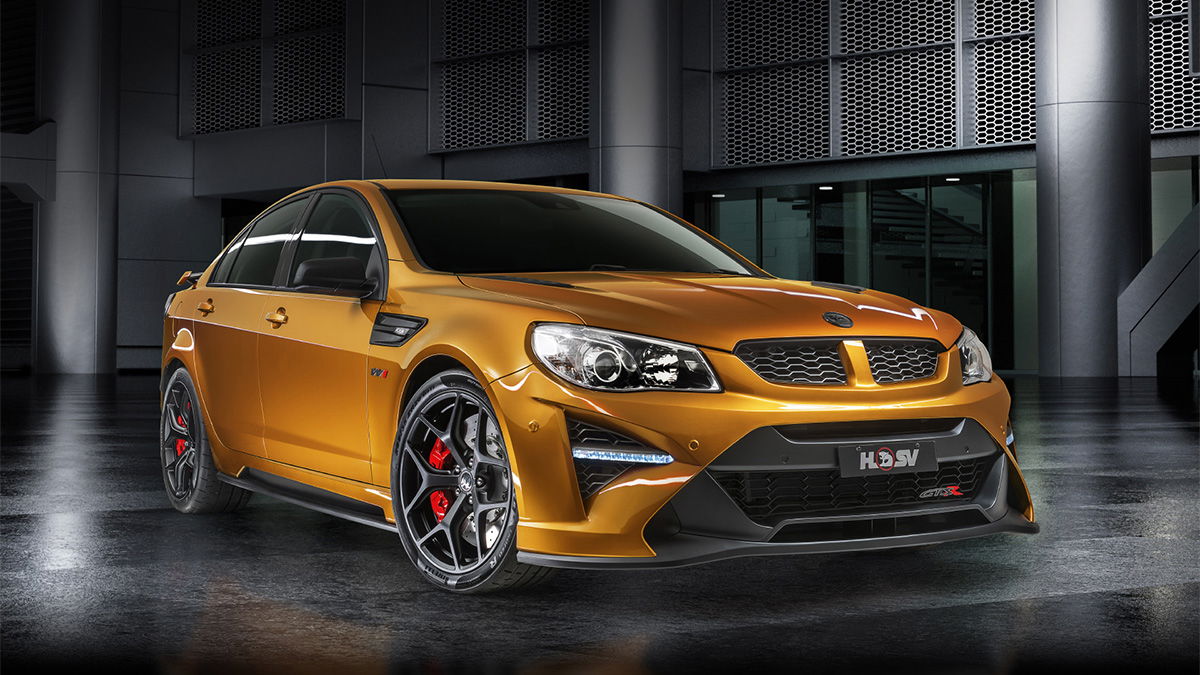
Production of the last Commodore sedan began early this week. The red SS-V Redline was completed today. It was the last car to be made in Australia. It was preceded by an SS Ute, a Caprice and a Calais V V6 Sportwagon.
The Commodore has had a massive presence in Australian motorsport. Since it took over from the Torana in 1980, every Australian Touring Car Championship, Bathurst 1000 and Australian Endurance Championship has been contested by a Commodore. The Commodore has won more Bathurst 1000s than any other car and is second only to the Ford Falcon in ATCC titles with a current tally of 15. Every one of Peter Brock’s nine Bathurst victories was in a Commodore. Jamie Whincup and Mark Skaife have both claimed four ATCC/Supercars championships each in Commodores.
It may not have had the Ford Falcon’s lifespan, or it’s film-star status, but it somehow manages to be arguably just as iconic. Maybe it’s becauseHolden is a uniquely Australian brand. Maybe it was the Peter Brock connection, or the ground made up during the VT-VX/AU years. Almost all Australians would have been in a Commodore at some point, and many Australians will miss it. There is nothing left that can quite fill the void left by the Commodore SS. The Kia Stinger is V6-only, and the Dodge Charger and Chrysler 300 are too big and heavy. We might never see anything like it again.
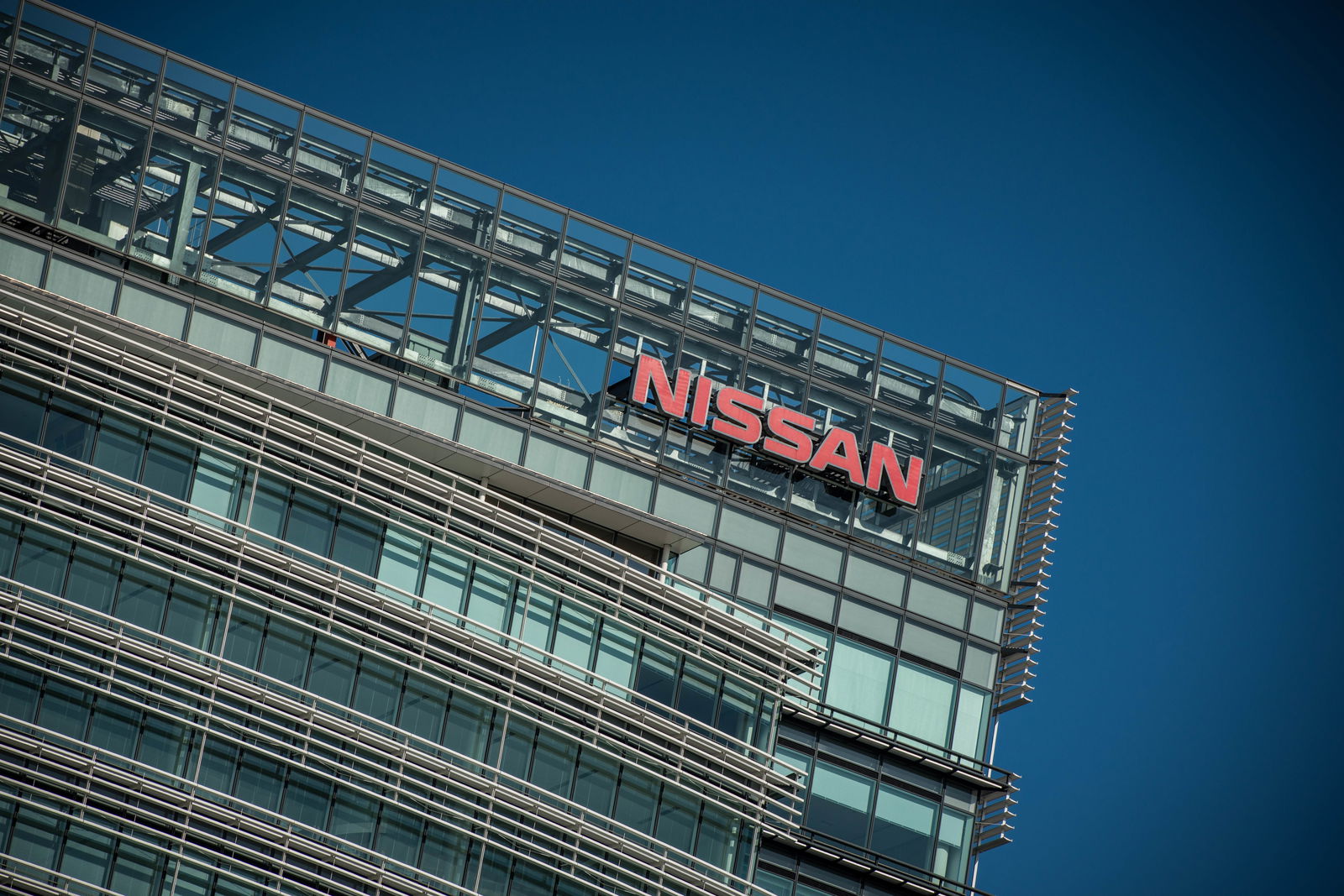
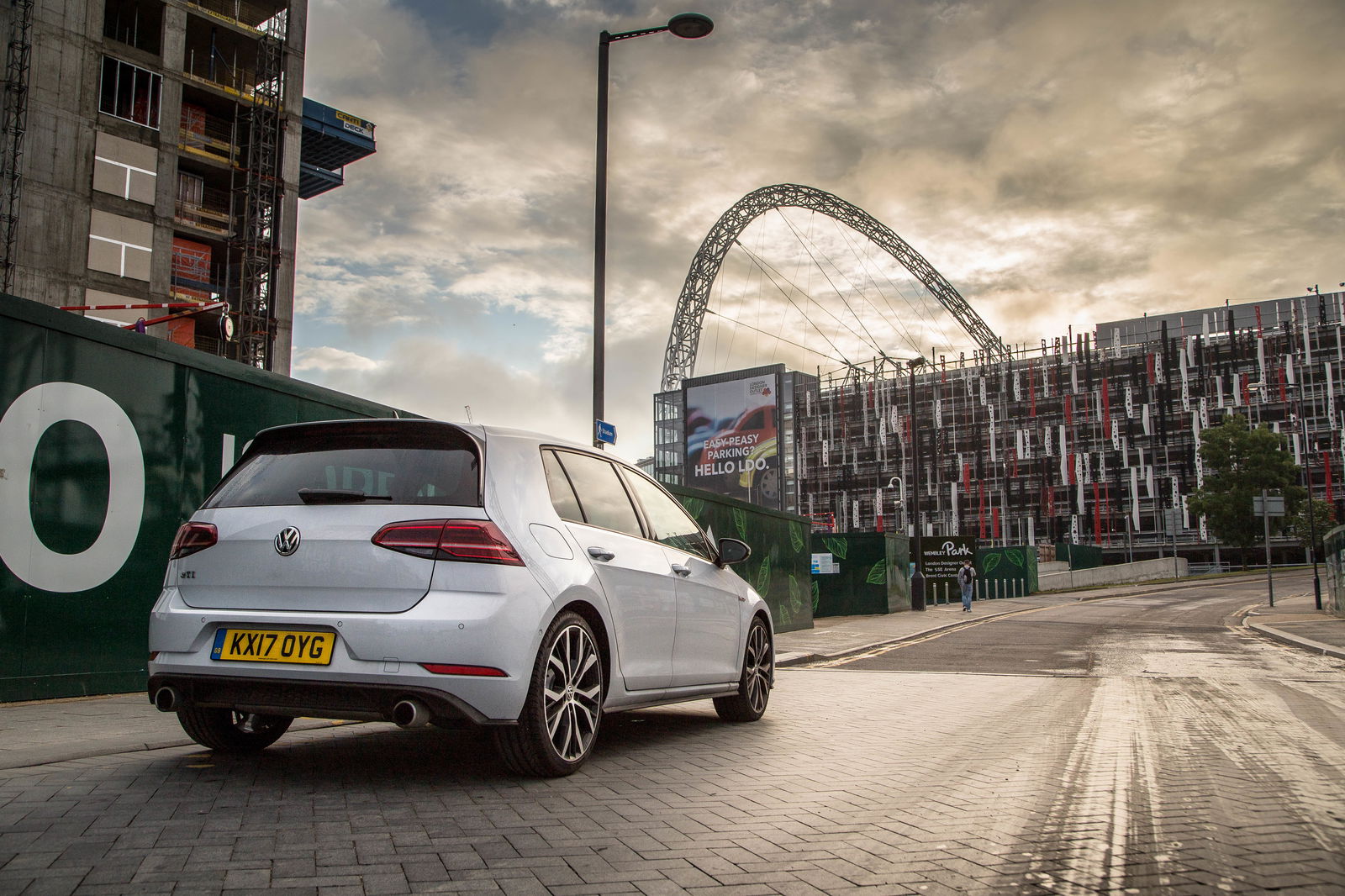
Comments
Shame that they are gone. Still remember my mum accidentally hiring a V8 VX Commodore instead of a V6 when we went to NZ. One of the best memories when I was growing up when she let the back end loose. Anyway, great article!
Rest in peace, Holden.
RIP Holden, the new Insignia looks really nice though and already has a 260hp engine with awd and I think there‘ll be a V6 version in 2018 with ~400hp.
Kyle Ashdown Editor’s pick, please?
Holden had something unique in their vehicles, especially in the Commodore, grew up seeing my uncles and Dad driving the Chevy Lumina, made me fell in love with the Commodore too after I found out the Holden brand, nothing can replace the Commodore/Lumina, not even the Charger.